Słupsk 2024-08-26
Electric Multiple Unit Newag Impuls.
Newag Impuls is a family of passenger (passenger) EZT trains built by the Newag plant in Nowy Sącz. The plant was established in 2005, based on the Railway Rolling Stock Repair Plant. Newag won the tender for the construction of six EZT type 14WE for the Fast Urban Railway in Warsaw. The trains were given numbers from 14WE-01 to 14WE-06. In addition to these six trains, a single copy of the “Papieski” train type 14WE-07 was built, and marked on PKP as EN61-001. Subsequent designs followed.
The construction of the first Newag Impuls train type 35WE 6-carriage, began in November 2011. The intention was to develop an intercity class train for routes of 200-300 km. The train test began in April 2012.
In 2011, work began on the 31WE 4-car type. This train was based on solutions used in the ETZ 35WE 6-car. In December 2012, the 31WE 4-car train was ready. Tests began in January 2013. On the night of 18 to 19 February 2013, during tests on the Central Railway Main Line, the 31WE type train reached a speed of 201.4 km/h, and during the last test it reached 211.6 km/h, setting a Polish record for vehicles designed and manufactured exclusively in Poland. The 31WE type trains were ordered by the Lubuskie and Zachodniopomorskie provinces, for their regional railways. In September 2013, the first 36WE-001 3-car type, manufactured for the Podkarpackie province, began testing and certification. Type 45WE, 5-section, in November 2014, Koleje Mazowieckie was the first to order. In order to speed up testing and certification, a train built for the West Pomeranian Voivodeship was used, in which the number of wagons was increased to five. After obtaining the certificate, the train was deprived of one section and handed over to the user as type 31WE. On the night of 28-29 August 2015, train type 45WE-010 for Koleje Mazowieckie, set another speed record on the Central Railway Main Line, reaching a result of 225.2 km/h.
In 2015, construction of a 4-car type 31WE train for PKP SKM Trójmiasto began. The problem was that the platforms in the Tri-City are high, which meant raising the floor in the cars. The train had to be redesigned, which was done. In 2015, Newag won an order for an ETZ for the Italian carrier Ferrovie del Sud Est.
The Pomeranian Voivodeship ordered 10 5-car Newag type 45WE trains, which received the EN90 designation, not EN79 as was the case with 5-car trains for the Małopolska Voivodeship.
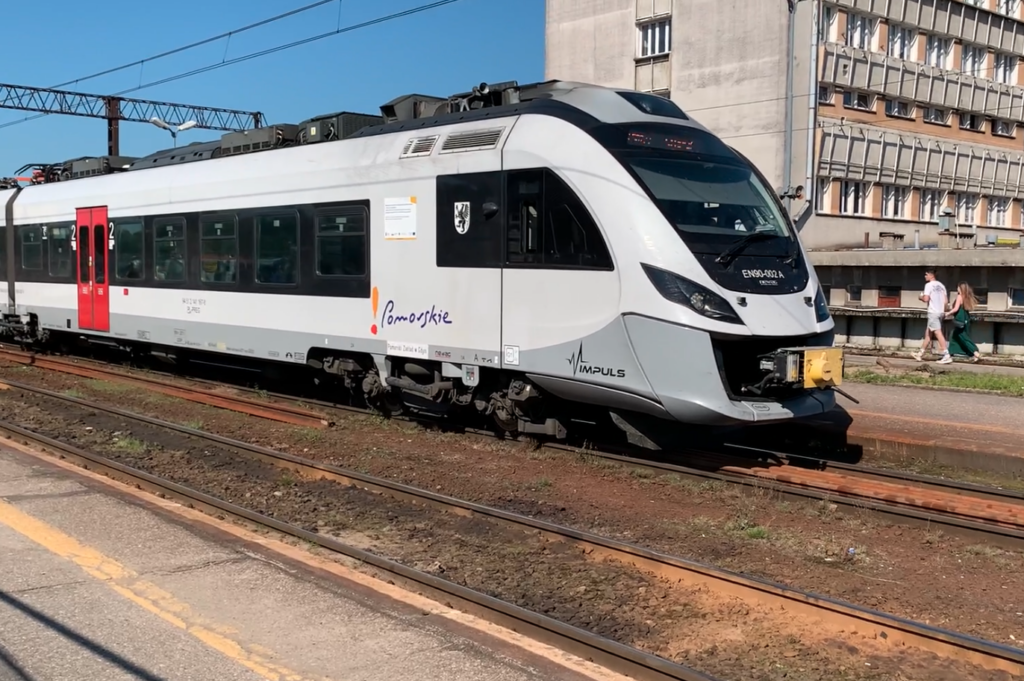
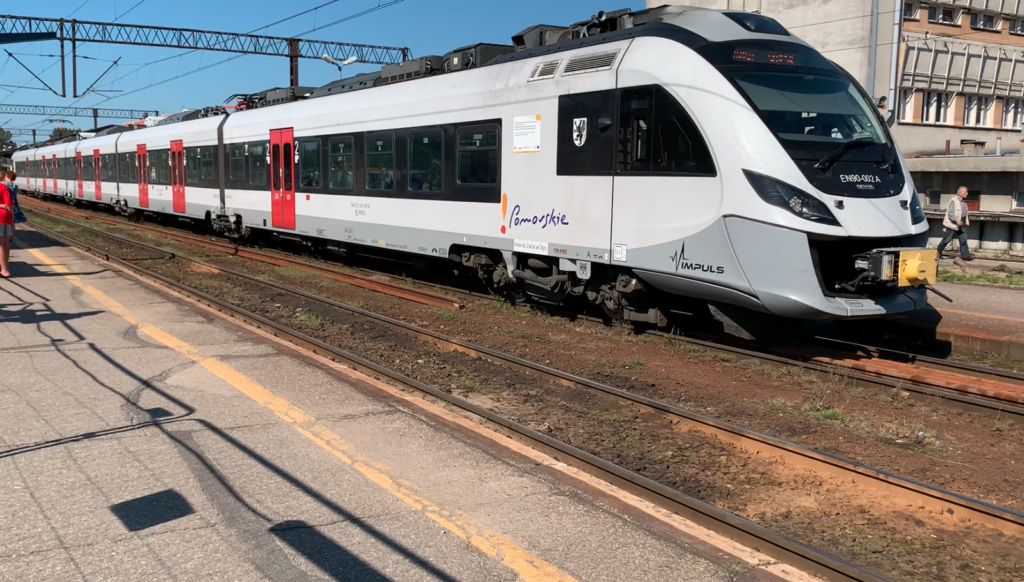
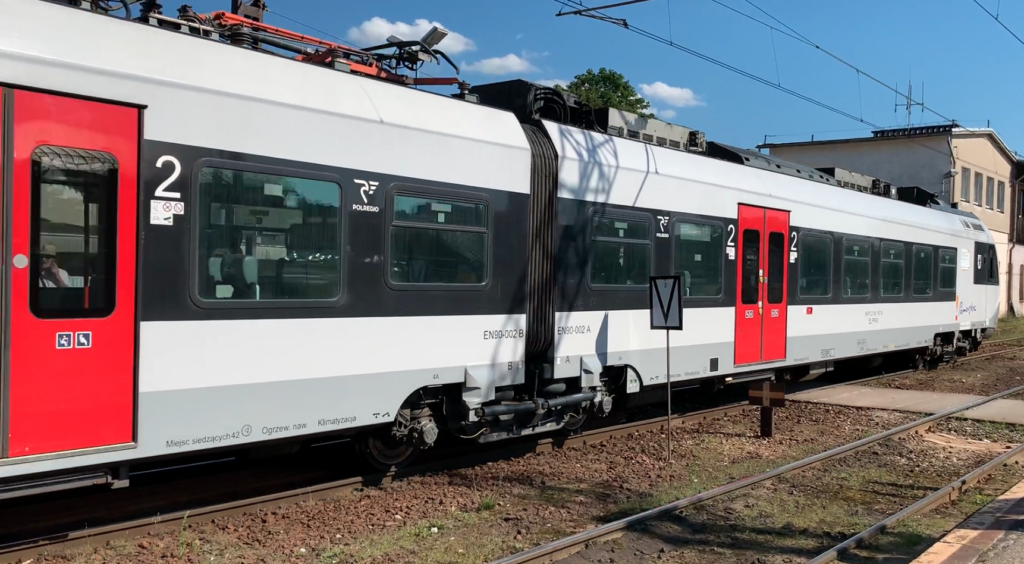
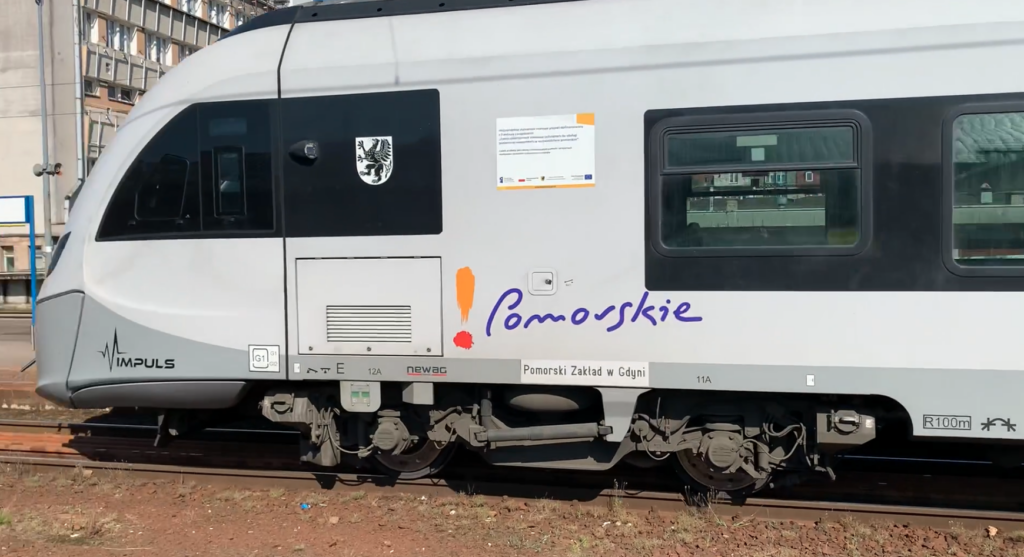
EZT Newag EN90-002 = 45WE-031 Impuls.
EZT Newag EN90-002 = 45WE-031 was built in December 2018, for the Marshal’s Office of the Pomeranian Voivodeship. The train was assigned to the locomotive shed in Gdynia. The train was painted in the PolRegio Pomorskie colors, i.e. gray-black-red. The train consists of five cars, with numbers: 9451 2 141 167-8 / 9451 2 141 168-6 / 9451 2 141 169-4 / 9451 2 141 170-2 / 9451 2 141 171-0.
The EZT Newag EN90-002 = 45WE-031 “Impuls” train is a standard-gauge Electric Multiple Unit with a lowered floor. The standard floor height is 760 mm from the railhead. The floor is raised in the bogie area.
The train is made as Class 2. The train has no doors between cars, i.e. it is made as a single-space train. In the first and last cars there is one pair of entrance doors, while in the other cars there are two pairs of doors. The doors are of the “jump-sliding” type. In the passenger space there are toilets in a closed system, including a toilet for the disabled. In the train there is space for passengers with limited mobility, large luggage or bicycles. The vehicles have a passenger information system in the form of loudspeakers, monitors and light direction boards. The trains have monitoring, air conditioning and heating with automatic regulation. There is an engine compartment between the driver’s cabins and the passenger compartment.
The trains are powered by 4 asynchronous electric motors, with a power of 500 kW each. The motors are controlled by inverters. The design speed of the train is 160 km/h, and the acceleration is 1 m/s2. The first and last bogies are 70RSNe type power bogies. Each bogie has one motor on the axle. Jacobs type bogies, type 72RSTc, are placed between the cars. The ends of two cars rest on one bogie. The wheel diameter is 0.84 m, which allows the floor in the inter-carriage passage to be significantly lowered. A Knorr-Bremse braking system is used.
All carriages are 2.84 m wide. The height of the carriages is 4.15 m. Each train has two half-pantographs. Number of seats 230 + 20. The train is 90.40 m long. Engines 4 x 500 kW. The train has air conditioning, space for bicycles, 230 V sockets, WiFi, toilets.
Written by Karol Placha Hetman
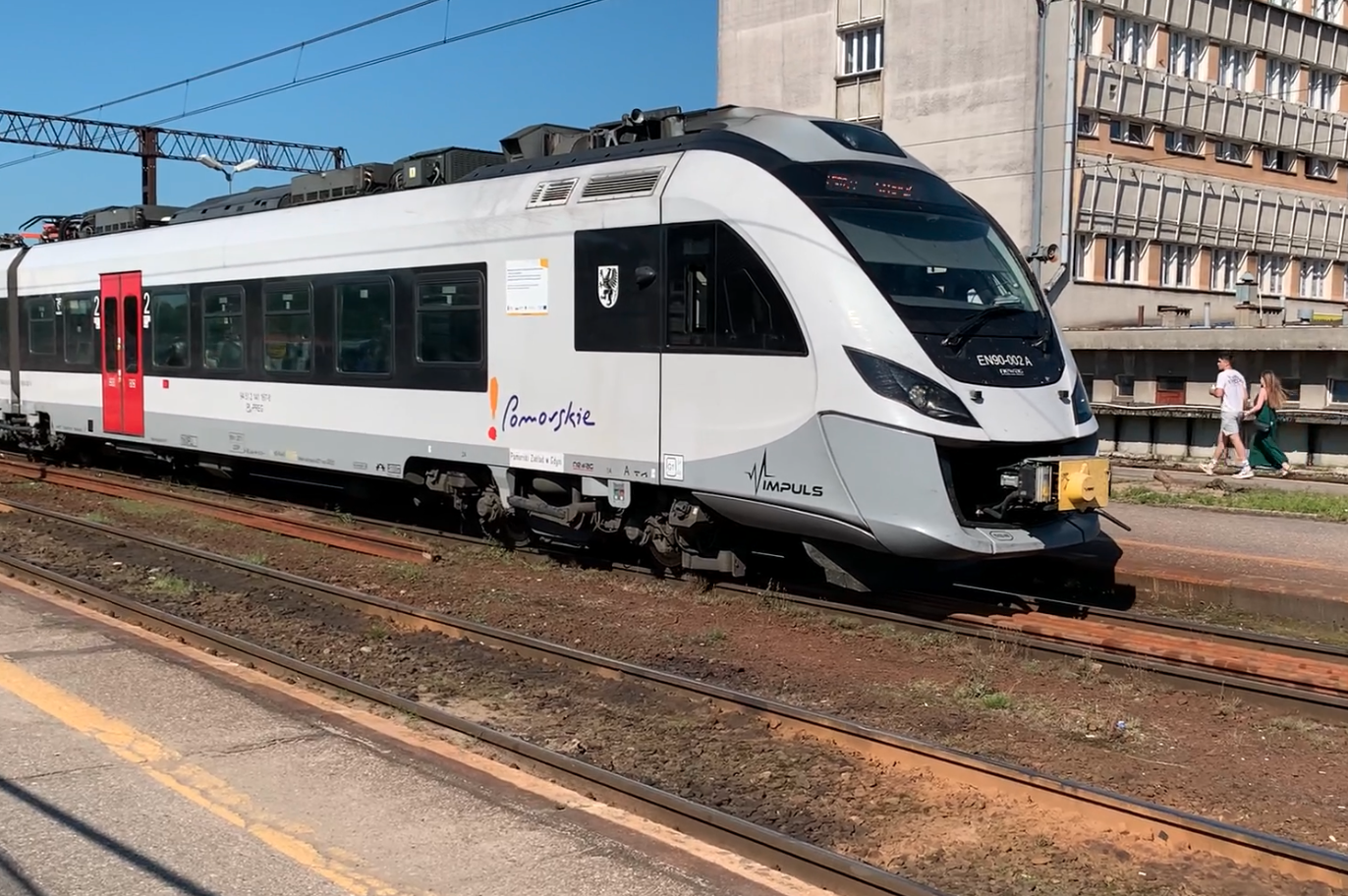
Leave a Reply
You must be logged in to post a comment.